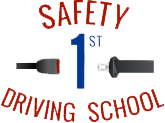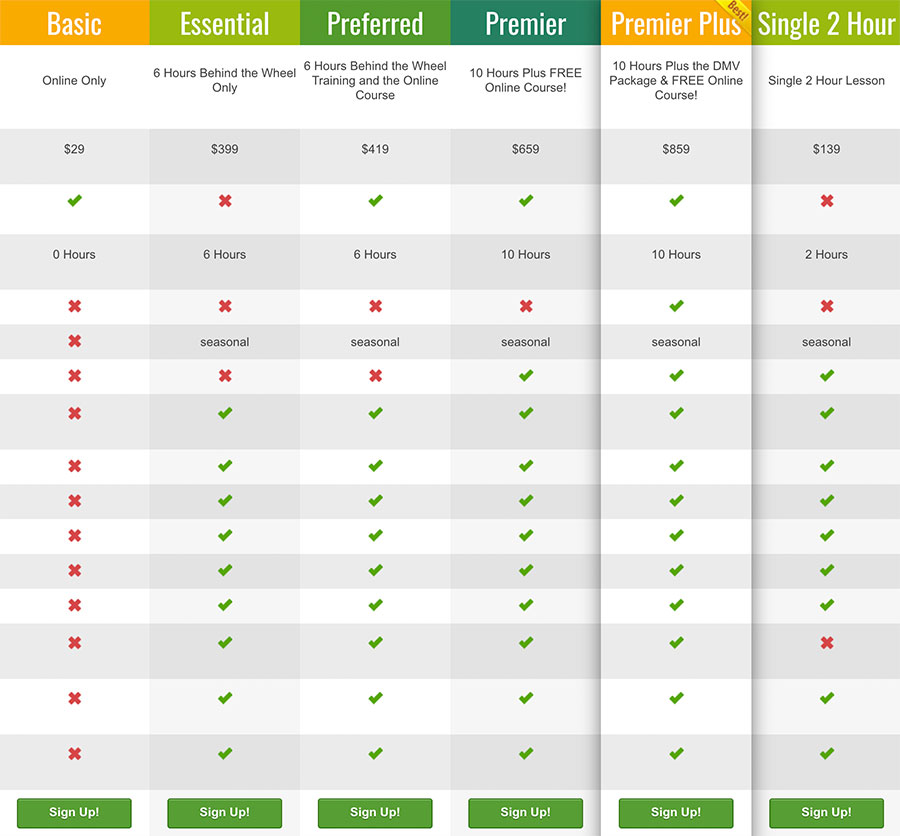Here’s the unfortunate truth. Teenage drivers continue to be a weak link in automobile safety in Orange County, California, and all of America. Automobile accidents are still the number one cause of death for teenagers.
We at Safety 1st Driving School have made it our primary goal to change those sad facts! We are committed to using the best techniques and the most relevant and impactful information and teaching methods to create safe, skillful drivers in San Clemente and all of Orange County.
Parents, this one’s for you. You are “in the driver’s seat” when it comes to teaching your teenager. You are the most influential person in your kids’ lives. Use that power wisely!
Safety 1st isn’t just about helping San Clemente teens learn to drive. We also want to help and support parents as they help their teens. Which is why we’ve designed a specialized Grading System. We use it for every Behind-the-Wheel lesson, to record each student’s strengths and areas of weakness, and we communicate it each time to the parents so they are on the same page with us and will know what to practice with their child on their own time. (That’s just ONE way we help parents. Give us a call and we’ll tell you more!)
It’s a big job! But we know you’re up to it.
Here are some helpful bits of advice as you get started on creating a safe, skilled driver in your teenager.
1. MODEL IT.
As we said, never underestimate your influence as a parent. You may think your teenager wants nothing to do with you, but you’re still an incredibly powerful presence in their life. Start teaching your kid to drive by modeling good driving skills and responsible behind-the-wheel behavior. This requires that you KNOW the laws first, and then that you follow them. So if you need a refresher course, look over your teen’s driver’s education materials. Go online and spend a little time researching. It’s worth it!
Here are some practical ideas:
- Practice defensive driving
- Always wear your seat belt
- Follow the speed limit
- Use your turn signals
- Check your mirrors
- Be patient with other drivers! If you are prone to road rage, your kid probably will be too.
- Show courtesy to other drivers.
- Don’t use your cell phone! If you must, use a hands-free device.
- Absolutely NO TEXTING. EVER!
Talk to your kid while you’re in the car. Point out things other drivers are doing (right or wrong), and things you’re doing. Admit your driving mistakes. Explain the purpose behind your safe driving and defensive driving techniques.
2. NO SCARE TACTICS.
If you’re the parent of a teenager, you probably know that scare tactics don’t work. It’s not just you, either – research supports it. Fear isn’t a good long-term motivator. It may work in the short-term, but wouldn’t you rather equip your child with the tools they need to become a skilled and safe driver for life, rather than showing them gruesome pictures of teenage car accidents? The difficulty with that – as with all good parenting – is that it takes time. But trust us when we say it’s well worth it to protect your child’s life and the lives of others.
3. KNOW YOUR TEENAGER.
Teenagers are complex creatures. Not quite children, not quite adults. Do a little research on the teenage mind and you’ll find that impulse control is lower in teenagers than in adults. Consequently they are more likely to take risks while driving. If you know and understand your teenager’s mind, you’ll have more realistic expectations from them. Don’t expect them to always make the best decisions on their own. You have to help them.
For example, an episode of Dr. Phil (we linked to it on our Facebook page) showed a teenager who texted – a LOT – while driving. It was obviously affecting her driving, and it was just a matter of time before she caused a major accident. The mother hesitated to take away her daughter’s cell phone because of the devastation it would cause her daughter to not be connected to her friends 24/7. Dr. Phil explained that the girl lacked the capacity to fully consider the potential devastating ramifications of her behavior, and admonished the mother to take her daughter’s phone away and “save her from herself.”
Not only should you know teenagers in general, but you also need to be an expert on YOUR child. What works? What doesn’t work? What gets through to them? If necessary, work on having a more positive relationship with your teenager first – then they may be more likely to take your advice.
4. BE THE PARENT.
Ultimately, your teenager needs to understand that driving is a privilege, not a right. You, the parent, need to communicate that to your child very clearly. Have some established expectations and consequences set forth regarding your child’s driving. (Some families use a Parent-Teen Driving Contract.) Whatever expectations or rules you lay down, follow through with the consequences. Whether you’re parenting a toddler or a teenager, consistency is key.
Educate yourself on how best to teach your teenager safe driving skills. Communicate with your teen’s driver’s education instructors and reinforce their teaching methods. Practice driving with your teenager in a patient, non-threatening way. Praise and encourage their strengths. Celebrate their progress. Believe in their ability to become a safe, skilled driver in Orange County!
And finally, we will end as we began. MODEL IT!


